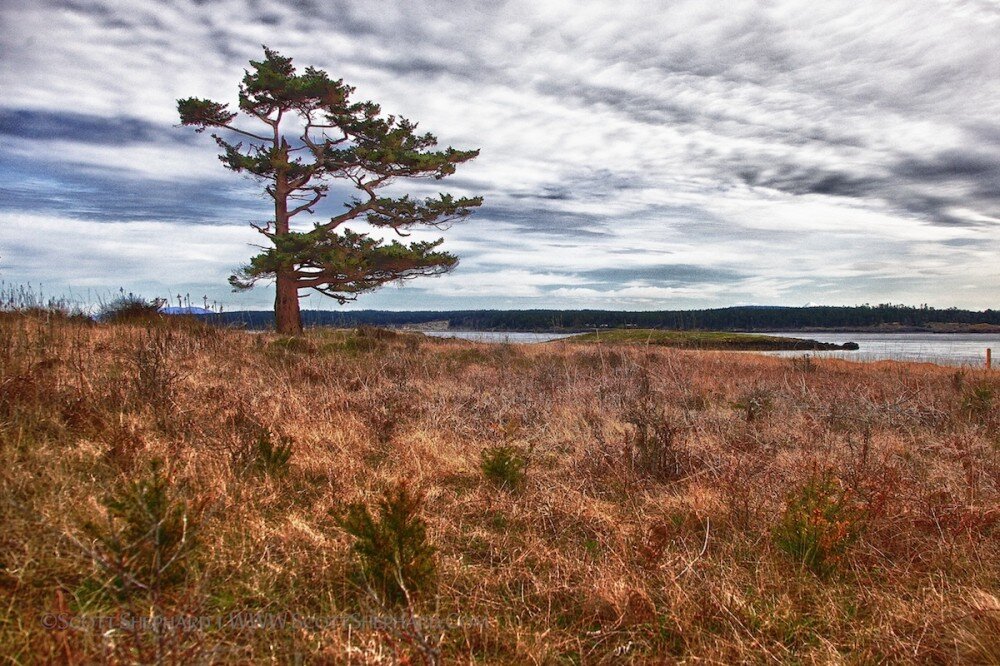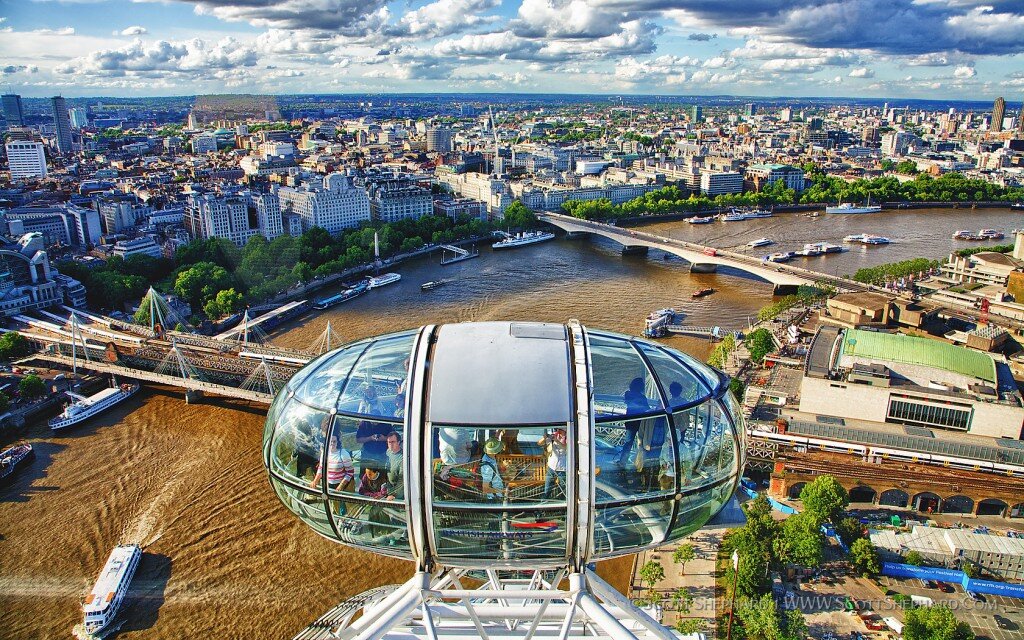 Generally, I use HDR tools very carefully when I work on photos. I'd like you to see a broad range of darks and lights in my HDR photos rather than an exaggerated HDR effect. I'm pleased that Joe Farace commented on this when he wrote about this blog in the October issue of Shutterbug.So why am I posting an HDR photo that is clearly less than "real?" I don't know. I worked on this photo for 30 minutes when, on a whim, I decided to see what Nik HDR Efex 2 would do to this scene. And this is the version that made the "final cut."Canon 5D 1/25s f/7.1 ISO250 40mm
Generally, I use HDR tools very carefully when I work on photos. I'd like you to see a broad range of darks and lights in my HDR photos rather than an exaggerated HDR effect. I'm pleased that Joe Farace commented on this when he wrote about this blog in the October issue of Shutterbug.So why am I posting an HDR photo that is clearly less than "real?" I don't know. I worked on this photo for 30 minutes when, on a whim, I decided to see what Nik HDR Efex 2 would do to this scene. And this is the version that made the "final cut."Canon 5D 1/25s f/7.1 ISO250 40mm
HDR
08-14-12 Hand County, South Dakota
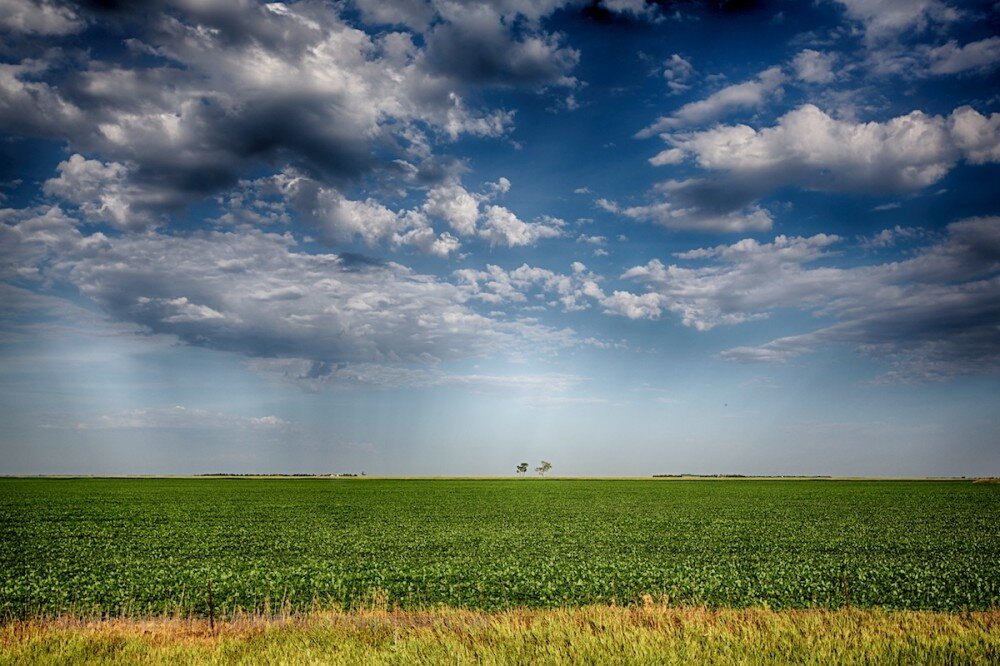 This is another HDR (high dynamic range) photo that is actually a combination of two photos. I'm not sure I like the dramatic "rays" that seem to be streaming to the ground from the clouds because I didn't see them when I took the photo. And they look a little unreal.But they are real. The HDR process only enhances and demonstrates what the camera "sees." As I was looking at this photo, wondering whether I should post it, it occurred to me that light is to a good camera what the high pitched dog whistle is to a dog: the camera and the dog perceive things much differently than humans do. And though cameras are tuned by humans to show us what humans normally see in terms of color, brightness and contrast, software processes allow us to see an alternate reality. In this case it is an HDR photo that shows us what shadows under clouds look like.On a side note, I took this photo where I did to pay homage to my mother- and father-in-law. Years ago they had a painting hanging over their couch that was a winter scene showing a prairie that was table flat and that stretched out to infinity. My mother-in-law said the picture reminded her of home, which was Hand County, South Dakota.Though it isn't winter yet in this scene, the landscape is certainly table flat.
This is another HDR (high dynamic range) photo that is actually a combination of two photos. I'm not sure I like the dramatic "rays" that seem to be streaming to the ground from the clouds because I didn't see them when I took the photo. And they look a little unreal.But they are real. The HDR process only enhances and demonstrates what the camera "sees." As I was looking at this photo, wondering whether I should post it, it occurred to me that light is to a good camera what the high pitched dog whistle is to a dog: the camera and the dog perceive things much differently than humans do. And though cameras are tuned by humans to show us what humans normally see in terms of color, brightness and contrast, software processes allow us to see an alternate reality. In this case it is an HDR photo that shows us what shadows under clouds look like.On a side note, I took this photo where I did to pay homage to my mother- and father-in-law. Years ago they had a painting hanging over their couch that was a winter scene showing a prairie that was table flat and that stretched out to infinity. My mother-in-law said the picture reminded her of home, which was Hand County, South Dakota.Though it isn't winter yet in this scene, the landscape is certainly table flat.
08-03-12 Dawn
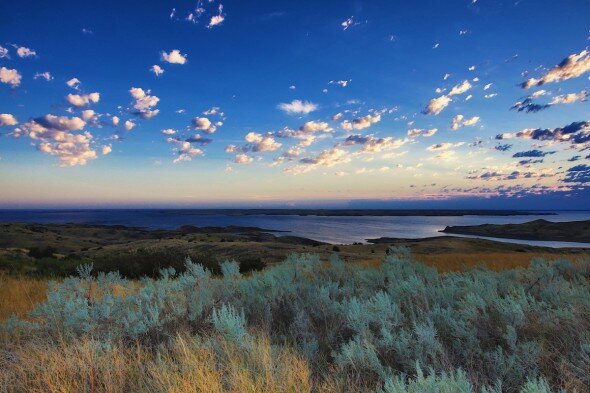 Here's another HDR photo taken from the bluffs overlooking the northern leg of the Little Bend on Lake Oahe. In the shot I posted a while back I was looking east into the rising sun. In this shot, I've moved my tripod, the sun is behind me and I am looking off to the northwest towards the Cheyenne River.I don't know about you, but when I look at this photo I see the pure white of the popcorn clouds. Then I see the sea green sage and, finally, the distant, dark water and long line of the cloud covered horizon. (And if you are paying attention to words here, I hope you appreciate my alliterative attempts. Opps, I did it again. :-) Or did I? Actually, "alliterative attempts" is an example of assonance. Sorry, but I was an English teacher long before I started to call myself a photographer.)
Here's another HDR photo taken from the bluffs overlooking the northern leg of the Little Bend on Lake Oahe. In the shot I posted a while back I was looking east into the rising sun. In this shot, I've moved my tripod, the sun is behind me and I am looking off to the northwest towards the Cheyenne River.I don't know about you, but when I look at this photo I see the pure white of the popcorn clouds. Then I see the sea green sage and, finally, the distant, dark water and long line of the cloud covered horizon. (And if you are paying attention to words here, I hope you appreciate my alliterative attempts. Opps, I did it again. :-) Or did I? Actually, "alliterative attempts" is an example of assonance. Sorry, but I was an English teacher long before I started to call myself a photographer.)
07-22-12 Glorious
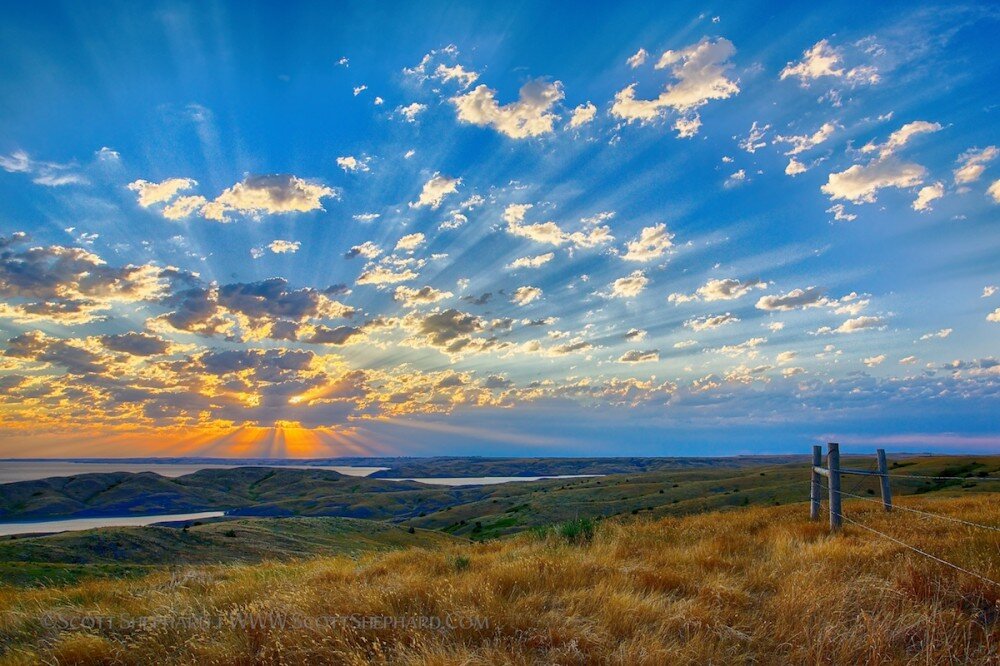 Sometimes, when I'm out at Lake Oahe in central South Dakota, I don't go sailing. On this particular morning, I woke up well before sunrise and at first light saw that there were some clouds off in the east that looked promising. So I packed up my camera gear and went driving. I ended up on the bluffs above the Little Bend area - an area I have been to many times before.It may seem obvious but a sunrise photo isn't about the sun - that looks pretty much the same every time. It's about the clouds, the terrain and the atmosphere. And in all of these cases, I got what I was looking for.This photo, incidentally, is an HDR photo, which means that it's really two or three photos sandwiched together into one. I experimented with a process that gives this photo a bit of a surreal look. Compositionally, this photo does what a landscape photo should do: there is something in the foreground, the middle ground and in the back ground.I wish you could have been with me when I took this photo. It was an amazing moment in an very special place.Canon 5DIII f/8.0 1/250 ISO400 19mm
Sometimes, when I'm out at Lake Oahe in central South Dakota, I don't go sailing. On this particular morning, I woke up well before sunrise and at first light saw that there were some clouds off in the east that looked promising. So I packed up my camera gear and went driving. I ended up on the bluffs above the Little Bend area - an area I have been to many times before.It may seem obvious but a sunrise photo isn't about the sun - that looks pretty much the same every time. It's about the clouds, the terrain and the atmosphere. And in all of these cases, I got what I was looking for.This photo, incidentally, is an HDR photo, which means that it's really two or three photos sandwiched together into one. I experimented with a process that gives this photo a bit of a surreal look. Compositionally, this photo does what a landscape photo should do: there is something in the foreground, the middle ground and in the back ground.I wish you could have been with me when I took this photo. It was an amazing moment in an very special place.Canon 5DIII f/8.0 1/250 ISO400 19mm
6-30-12 Daisy, Daisy, daisy
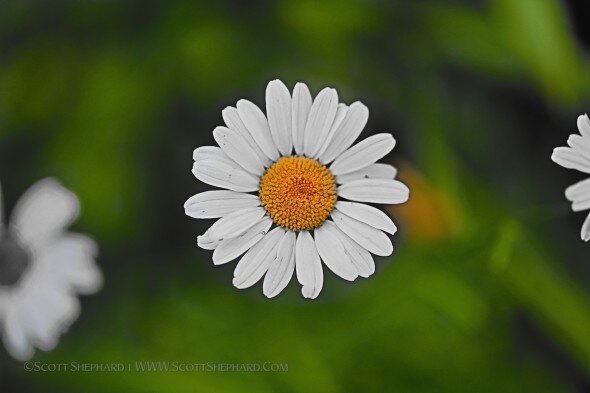 Not counting the parts of daisies on edges of this photo, there really are three daisies in this photo. "Really?!" you say. Really. This is a layered HDR photo that I made (not took) with my Canon 5D Mark III. It has HDR capacity built in. The things you can do with the new-fangled cameras. . .Incidentally, the title of this post pays homage to the famous scene in Stanley Kubrick's fiLm "2001: A Space Odyssey," where an astronaut "kills" HAL, the on-board computer. (HAL, by the way, is an acronym that is only one letter away from IBM. Coincidence?).When that film came out in 1968, 2001 seemed so far away. And now it's 2012 and we have cameras that are smarter than those who use them. Like me and my 5DIII. . .
Not counting the parts of daisies on edges of this photo, there really are three daisies in this photo. "Really?!" you say. Really. This is a layered HDR photo that I made (not took) with my Canon 5D Mark III. It has HDR capacity built in. The things you can do with the new-fangled cameras. . .Incidentally, the title of this post pays homage to the famous scene in Stanley Kubrick's fiLm "2001: A Space Odyssey," where an astronaut "kills" HAL, the on-board computer. (HAL, by the way, is an acronym that is only one letter away from IBM. Coincidence?).When that film came out in 1968, 2001 seemed so far away. And now it's 2012 and we have cameras that are smarter than those who use them. Like me and my 5DIII. . .
05-13-12 Wind Swept
04-11-12 Easter Morning, 2012 - San Juan Island
 This photo was taken a few miles west of the city of Friday Harbor, Washington, on San Juan Island. I had found this location the day before but thought that it would photograph better just after sunrise. The chances that I would have a mostly clear morning weren't that great. But, as you can see, nature performed well for me.I used Auto Exposure Bracketing to take three different exposures of the same scene but in the end I used the darkest of the three and a plug-in in Aperture to create this photo, which shows details in the darkest parts and in the brightest. That's what HDR (high dynamic range) does.
This photo was taken a few miles west of the city of Friday Harbor, Washington, on San Juan Island. I had found this location the day before but thought that it would photograph better just after sunrise. The chances that I would have a mostly clear morning weren't that great. But, as you can see, nature performed well for me.I used Auto Exposure Bracketing to take three different exposures of the same scene but in the end I used the darkest of the three and a plug-in in Aperture to create this photo, which shows details in the darkest parts and in the brightest. That's what HDR (high dynamic range) does.
Seattle City Scape
 Being in the right place at the right time makes a photographer's job easier. Sometimes I manage this by intent and sometimes by luck.In the case of this photo of Seattle, I got lucky. Apparently, it had been cloudy, cool and rainy for most of the week prior to our three-day stay in the area. But during our entire stay, it ranged from partly cloudy to crystal clear. I took this photo later in the afternoon, which resulted in nearly perfect light for the scene. And I couldn't have asked for more interested clouds.And, yes, this photo is manipulated in software. In my intent to work on the contrast in the photo, I found a setting in Nik Color Efex 4 that gave a look to this scene that I liked.
Being in the right place at the right time makes a photographer's job easier. Sometimes I manage this by intent and sometimes by luck.In the case of this photo of Seattle, I got lucky. Apparently, it had been cloudy, cool and rainy for most of the week prior to our three-day stay in the area. But during our entire stay, it ranged from partly cloudy to crystal clear. I took this photo later in the afternoon, which resulted in nearly perfect light for the scene. And I couldn't have asked for more interested clouds.And, yes, this photo is manipulated in software. In my intent to work on the contrast in the photo, I found a setting in Nik Color Efex 4 that gave a look to this scene that I liked.
Back At Iron Creek (HDR)
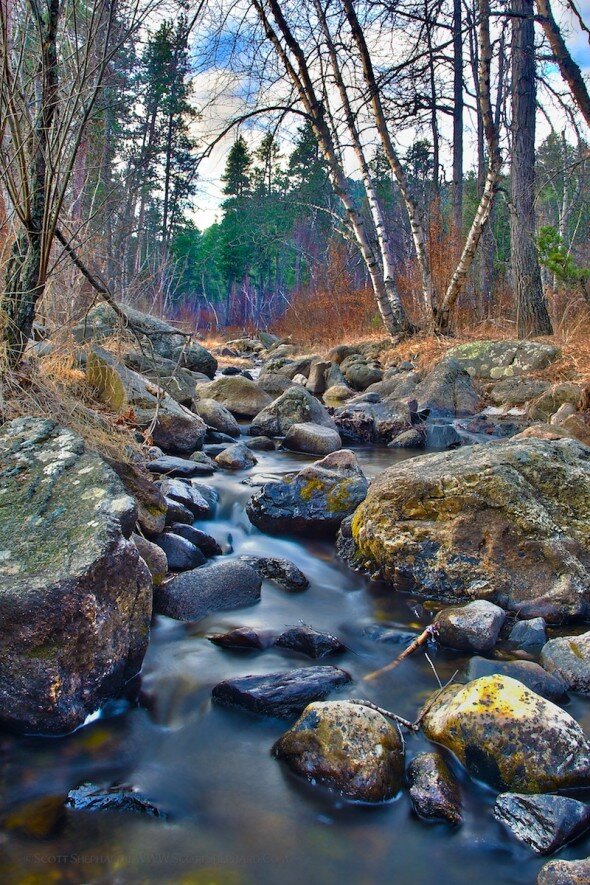 I make a photographic pilgrimage to this place in the Black Hills of South Dakota two or three times a year. I have taken countless pictures here but in 2009, when the photos for today's post were taken, I was experimenting with high dynamic range photography. HDR photos are often two or more photos that are exposed for specific parts of a scene and re then combined.In 2009 the only process I knew for combining two photos into one was a labor intensive task and so I never got around to playing with these pictures. Until yesterday.The process now involves using an automated process in Photoshop CS5 and then importing the composite into Aperture and doing the fine tuning there.Beneath today's post I am revealing the original files. I'm not sure that I should show these files because you might think I am doing something unnatural to the scene to make it look better. But I'm letting you in on a bit of the amazing HDR process. And did Iron Creek really look like the final result in this post? More or less. I say this because HDR processing allows for surrealism and I would say that there is a bit of that here. The result, given the two original files, is certainly intriguing.
I make a photographic pilgrimage to this place in the Black Hills of South Dakota two or three times a year. I have taken countless pictures here but in 2009, when the photos for today's post were taken, I was experimenting with high dynamic range photography. HDR photos are often two or more photos that are exposed for specific parts of a scene and re then combined.In 2009 the only process I knew for combining two photos into one was a labor intensive task and so I never got around to playing with these pictures. Until yesterday.The process now involves using an automated process in Photoshop CS5 and then importing the composite into Aperture and doing the fine tuning there.Beneath today's post I am revealing the original files. I'm not sure that I should show these files because you might think I am doing something unnatural to the scene to make it look better. But I'm letting you in on a bit of the amazing HDR process. And did Iron Creek really look like the final result in this post? More or less. I say this because HDR processing allows for surrealism and I would say that there is a bit of that here. The result, given the two original files, is certainly intriguing.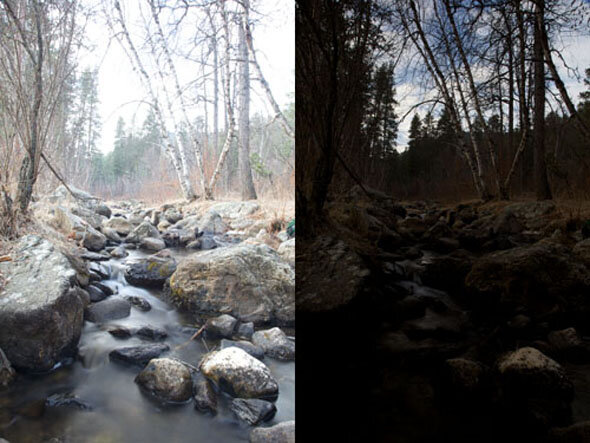
A View From the Eye
Manipulated Reality
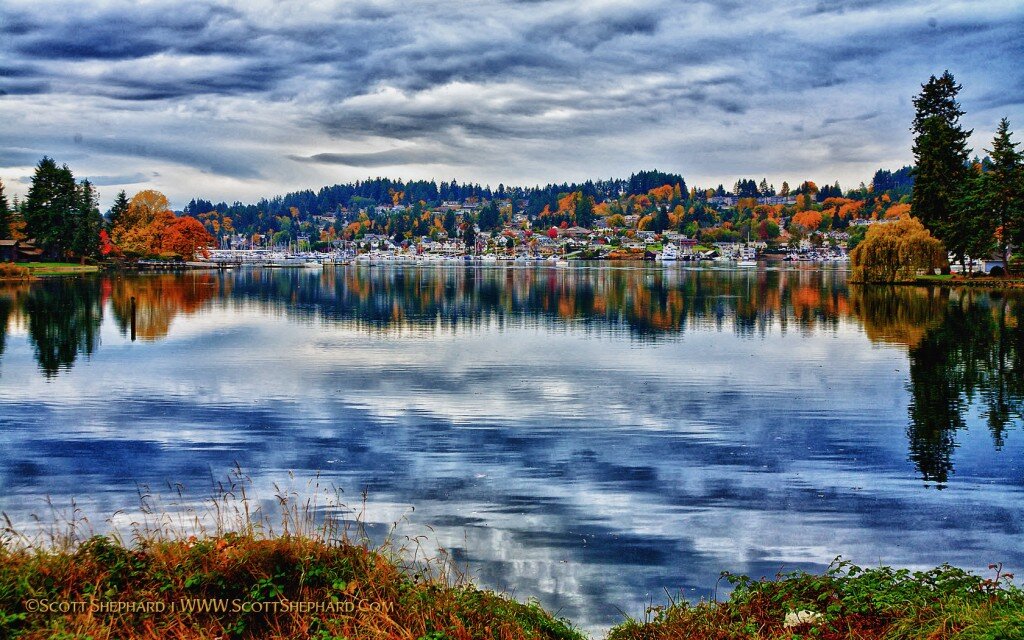 This was done as part of a teaching demonstration yesterday and while I have already posted a variation of this photo (click), I thought I'd post the doctored photo.Everything thing you see here is "real" and existed in the original photo. The difference between my original post and this one is that there is software that will amplify and adjust the various bits of information, including color, contrast and sharpness. My own take on a photo like this is that it is interesting but that it isn't lasting art. Frankly, the first one may not be either.
This was done as part of a teaching demonstration yesterday and while I have already posted a variation of this photo (click), I thought I'd post the doctored photo.Everything thing you see here is "real" and existed in the original photo. The difference between my original post and this one is that there is software that will amplify and adjust the various bits of information, including color, contrast and sharpness. My own take on a photo like this is that it is interesting but that it isn't lasting art. Frankly, the first one may not be either.
Split Harbor (HDR)
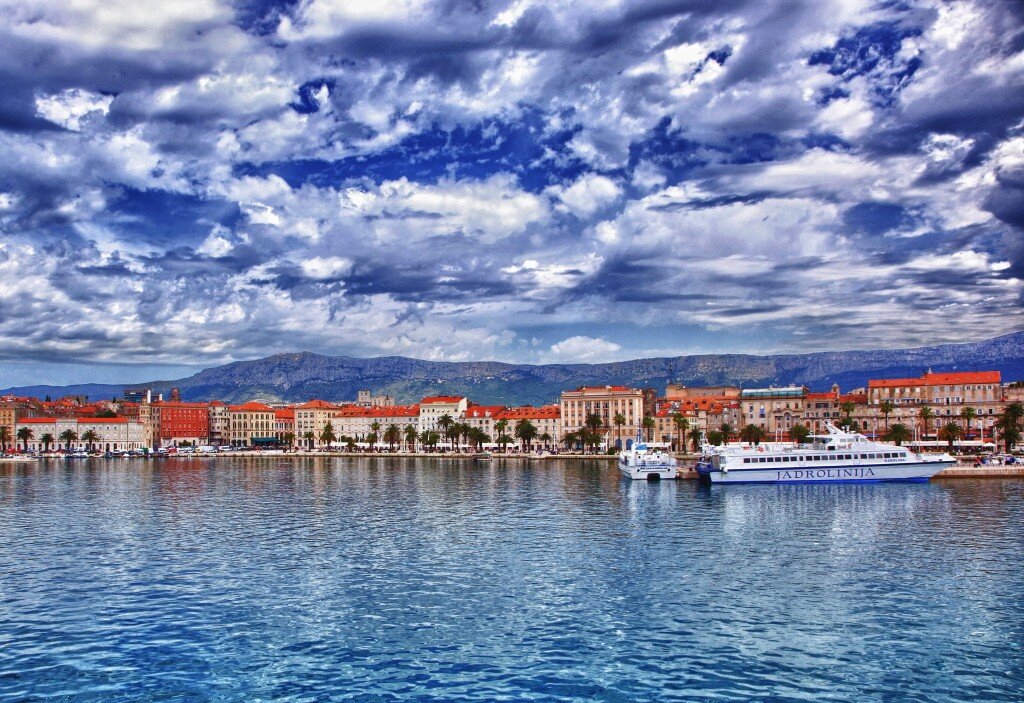 This is not a true, layered HDR photo. Instead, I made it using Nik Software's Color Efex Pro 4.0 and Nik Efex HDR. It creates a bit of a surreal effect, I think.Are you a photography student wanting to know more about the process that leads to photos like this? Here's a tutorial I created this morning fresh off the video "press."
This is not a true, layered HDR photo. Instead, I made it using Nik Software's Color Efex Pro 4.0 and Nik Efex HDR. It creates a bit of a surreal effect, I think.Are you a photography student wanting to know more about the process that leads to photos like this? Here's a tutorial I created this morning fresh off the video "press."

